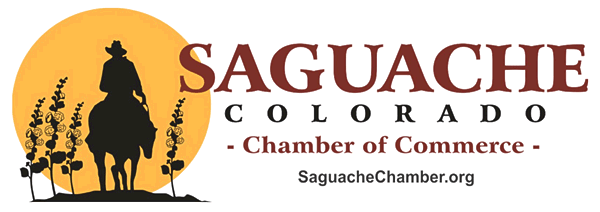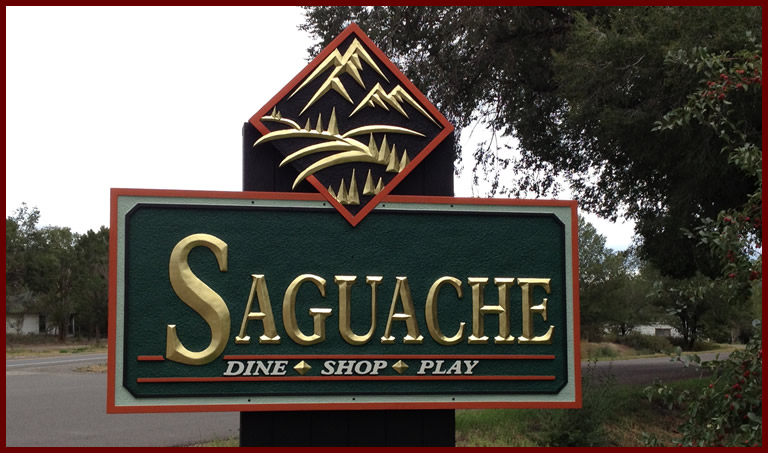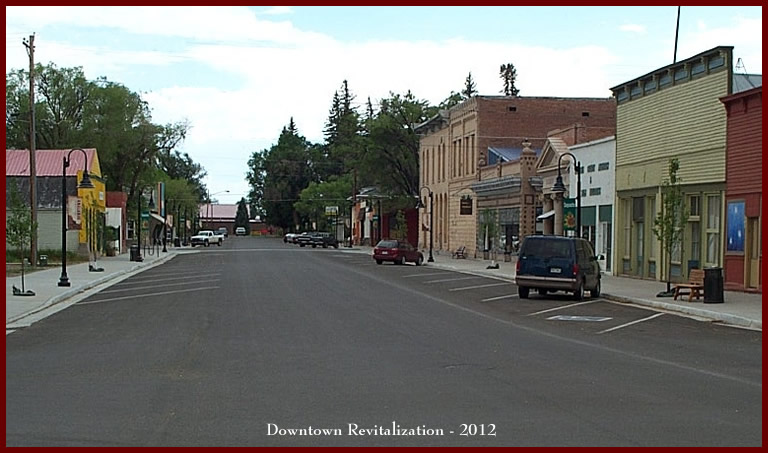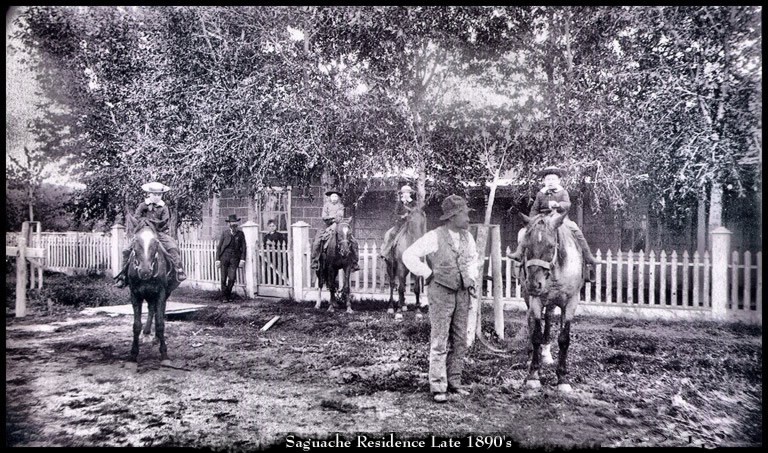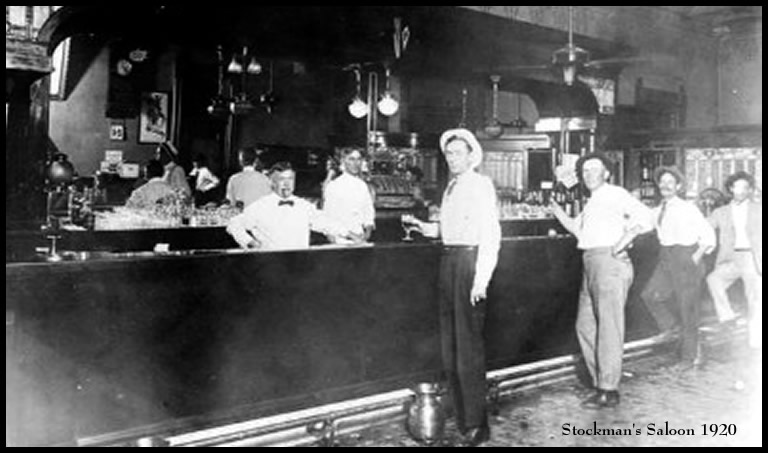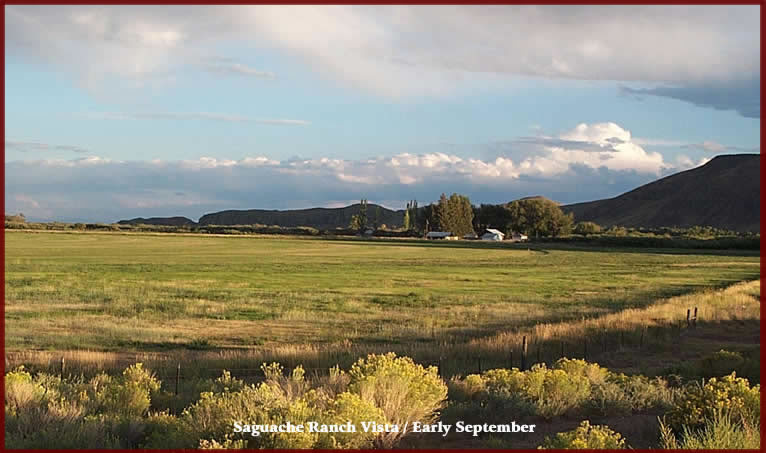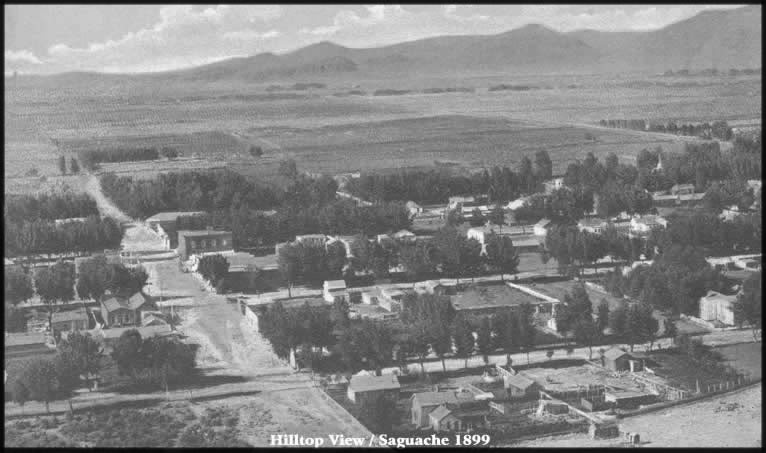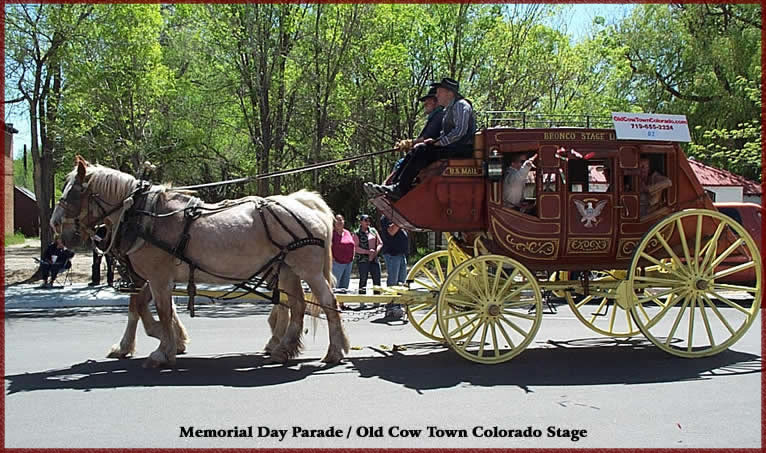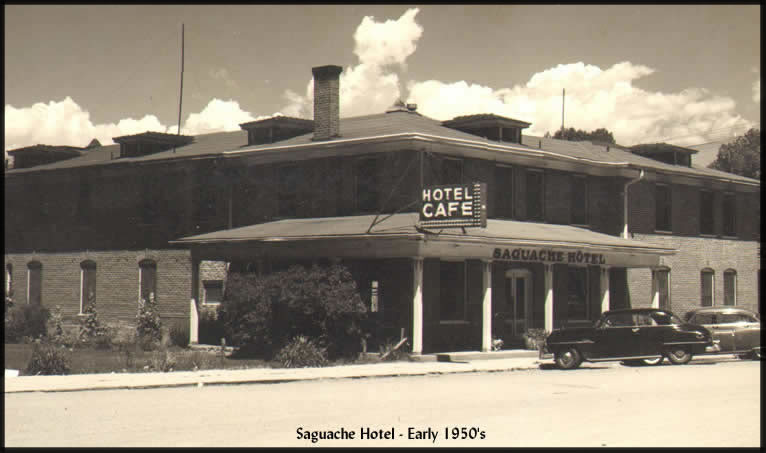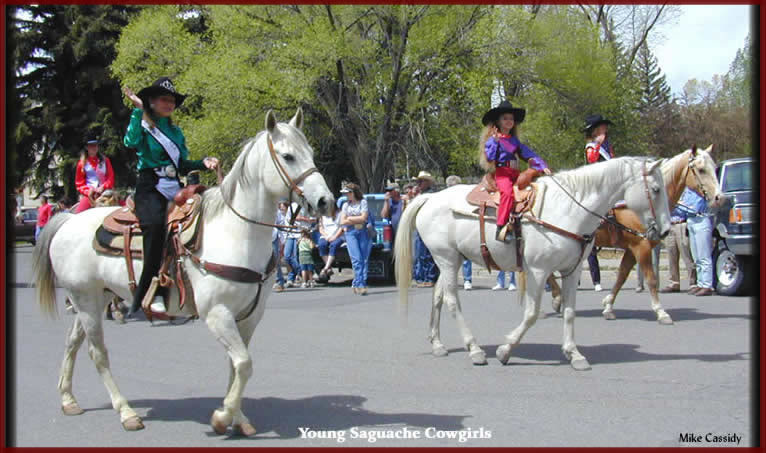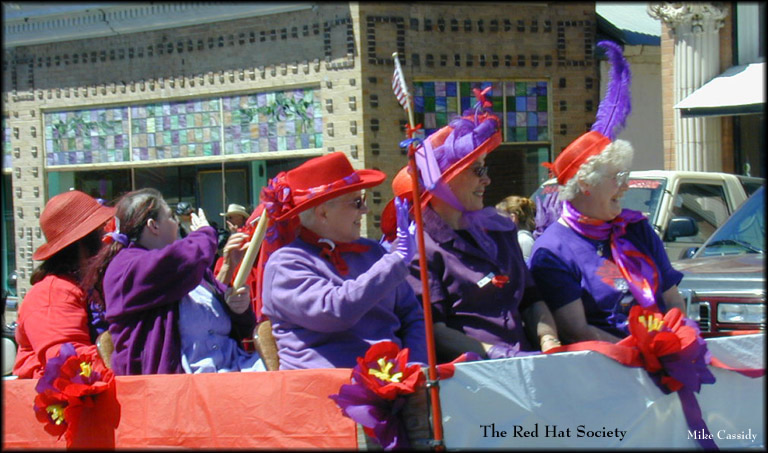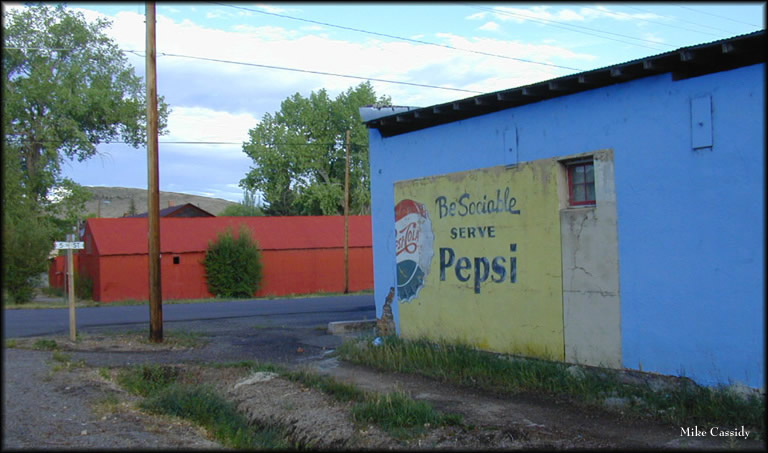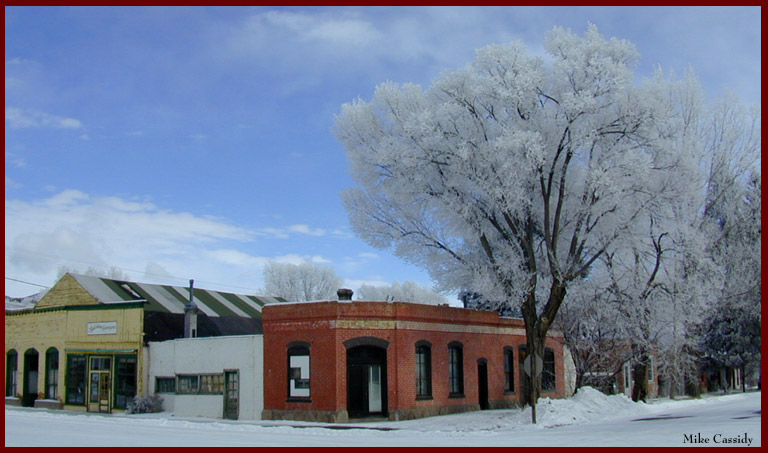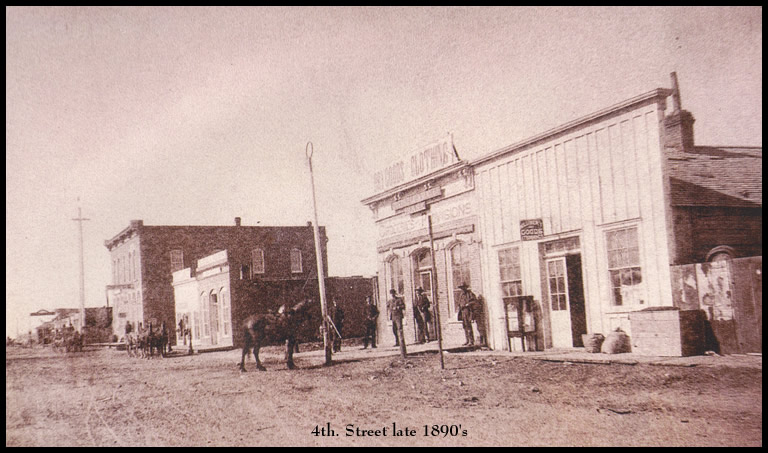Saguache County – Past and Present
Saguache County’s past and present are as diverse as the great expanse that it occupies. From the little town of Saguache to the wilderness beyond, Saguache County harbors many cultural treasures and clues to the way life once was. Even among the hills surrounding the town of Saguache, tools and crude stone shelters have been found, dating back to 1100 A.D. Several Native American tribes were seasonal visitors to Saguache, drawn to the valley to share in its bounty of wildlife and other resources. A preponderance of Ute Indians lived to the west, in the Shining Mountains of the San Juan range. In winter, they would venture to the San Luis Valley to hunt buffalo and other game. As time passed, the Utes and other tribes discovered that they were going to have to share the valley with newcomers, the Europeans.
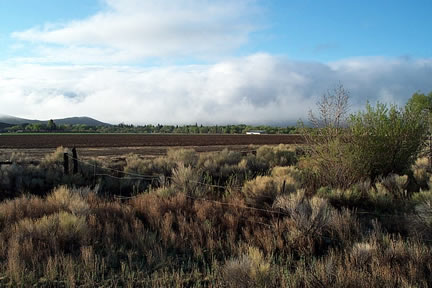 Pushing north from what is now New Mexico, Spanish expeditions arrived in the San Luis Valley in the 1500s, and there is evidence that the Spanish began mining in the area as early as the 1600s. President Grant and Ute Chief Ouray negotiated the Treaty of 1868, assuring the Utes ownership of their ancestral lands in the Shining Mountains. Soon after, though, the Utes found themselves continuously fighting the encroaching whites for what was rightfully theirs by treaty.
Pushing north from what is now New Mexico, Spanish expeditions arrived in the San Luis Valley in the 1500s, and there is evidence that the Spanish began mining in the area as early as the 1600s. President Grant and Ute Chief Ouray negotiated the Treaty of 1868, assuring the Utes ownership of their ancestral lands in the Shining Mountains. Soon after, though, the Utes found themselves continuously fighting the encroaching whites for what was rightfully theirs by treaty.
Because of its geography, Saguache was always a natural crossroads for natives and settlers alike. Many fur trappers came to and through Saguache by following the Old Spanish Trail. Explorers such as Pike and Fremont were sent through the valley to find viable rail routes to the west. In the mid-1860s, the first permanent white settlements were established in Villa Grove and the Town of Saguache. From these towns, wheat was milled and packed to be sent over Cochetopa and Poncha passes, and to surrounding mining camps. Otto Mears built toll-roads over these passes, increasing the accessibility to the area. Saguache County was officially founded in 1866.
By the 1870s, gold and silver were discovered in the Sangre de Cristo range, bringing more newcomers to the area. Of the thousands that came and set up mining camps and overnight towns, just a few rode away millionaires. Large mineral discoveries were made in Bonanza and Orient around 1880 and railways made it possible to ship ore from these remote locales over the mountains to the smelters. Trains remained as the primary form of transportation in Saguache County until the 1920s.
In the very dust that arose from the exodus of miners out of Saguache County, a robust farming and ranching way of life took root. More sheep and cattle were soon herded into the county. Beef, leather and wool became the new ore, driving the engine of settlement. Livestock were pushed into the lush high-country meadows in summer and corralled or shipped off in the fall. Today, the county continues its agricultural and ranching heritage, as well as sporting an innumerable array of other activities, attractions, and livelihoods.
Town of Saguache – Past and Present
The name of the town, Saguache, comes from a Ute word, meaning “water at the blue earth.” Saguache creek flows just outside of the town, (also the county seat), from its beginnings high in the San Juan Mountains. Saguache has been a travelers’ hub for centuries. Native Americans, Spanish sheepherders, white settlers and miners all passed through this area, many of whom sought passage west along the Old Spanish Trail. In the mid 1800’s, sheepherders pressed north and west every year, driving their flocks into the hills for summer grazing. The formation of the town was influenced by the occupations and needs of the era. Mining became a significant influence on Saguache, since miners needed a steady supply of food and other goods.
 Otto Mears arrived in Saguache in 1867. Although he became famous for the building of toll roads over the high passes of Colorado, Mears’ first projects were the purchase of a wheat thresher and the construction of a grist mill for making flour. The mill was built west of town and served Saguache and the surrounding mining camps. In 1874, the Saguache Town Company was formed and locals pitched in with land and labor to make Saguache a viable supply town. Otto Mears opened the first newspaper in 1874—the Saguache Chronicle—in order to attract other pioneers to his exciting new venture. Otto Mears went on to build several toll roads in Colorado, thus improving the capacity for travel and commerce among mountain communities. Mears’ stained glass portrait was hung in the State Capitol building in 1904, commemorating his achievements in the State of Colorado.
Otto Mears arrived in Saguache in 1867. Although he became famous for the building of toll roads over the high passes of Colorado, Mears’ first projects were the purchase of a wheat thresher and the construction of a grist mill for making flour. The mill was built west of town and served Saguache and the surrounding mining camps. In 1874, the Saguache Town Company was formed and locals pitched in with land and labor to make Saguache a viable supply town. Otto Mears opened the first newspaper in 1874—the Saguache Chronicle—in order to attract other pioneers to his exciting new venture. Otto Mears went on to build several toll roads in Colorado, thus improving the capacity for travel and commerce among mountain communities. Mears’ stained glass portrait was hung in the State Capitol building in 1904, commemorating his achievements in the State of Colorado.
Alfred Packer spent some time in Saguache, before his ill fated trip to California. Read more about him here.
Other businesses that flourished during Saguache’s early years were the Colorado Hall (serving the purest wines and liquors), the Saguache Meat Market, a boarding house, a grocery, law firms, a hardware store, a hotel, a sawmill, and The Saguache Chronicle newspaper. Following several name changes, The Saguache Chronicle eventually became The Saguache Crescent. The Saguache Crescent newspaper is still printed every week, one letter at a time on a press built in 1915. It is also still the county’s “paper of record,” and the press is operated by a third generation descendant of the family who purchased it in 1917.
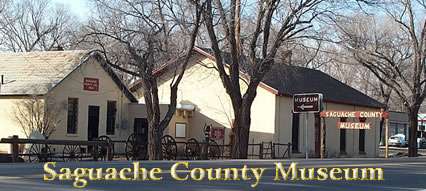 Sheep ranching gradually gave way to cattle and alfalfa hay production. Local government has become the primary employer in town. Present-day Saguache has one school, a library, a museum, four churches, two gas stations, one liquor store, two grocery stores, two restaurants, a sawmill, and an organic farm. Saguache is the gateway to the San Juan Mountains, home to the Rio Grande National Forest and the La Garita Wilderness Area. Highway 114 to Cochetopa Pass roughly follows the original Old Spanish Trail, offering stunning views and access to vast public lands. Many hunters, anglers, cyclists and backpackers get provisions here before heading out into the high country. Today, as in past times, Saguache is still a popular stop for many travelers.
Sheep ranching gradually gave way to cattle and alfalfa hay production. Local government has become the primary employer in town. Present-day Saguache has one school, a library, a museum, four churches, two gas stations, one liquor store, two grocery stores, two restaurants, a sawmill, and an organic farm. Saguache is the gateway to the San Juan Mountains, home to the Rio Grande National Forest and the La Garita Wilderness Area. Highway 114 to Cochetopa Pass roughly follows the original Old Spanish Trail, offering stunning views and access to vast public lands. Many hunters, anglers, cyclists and backpackers get provisions here before heading out into the high country. Today, as in past times, Saguache is still a popular stop for many travelers.
